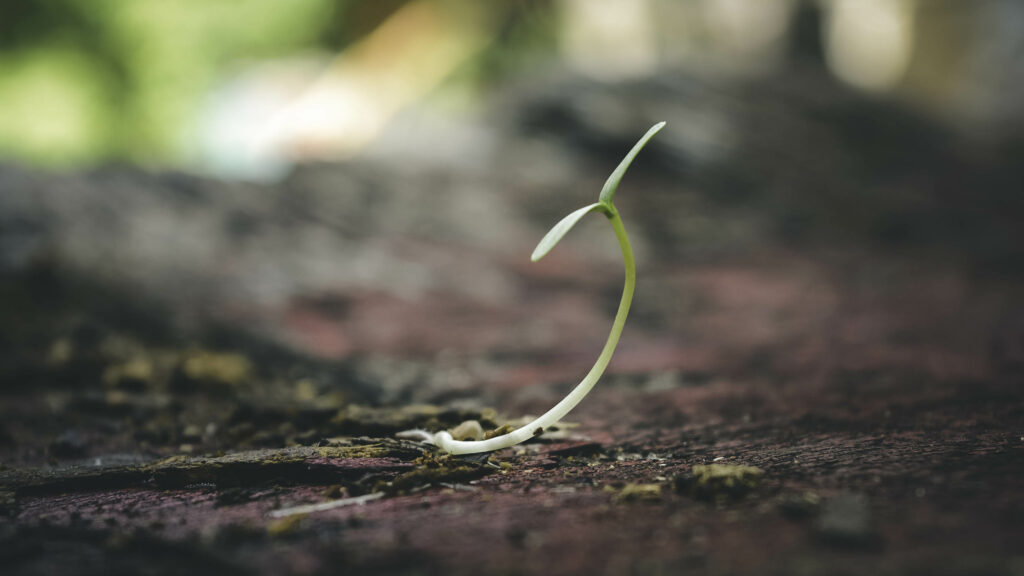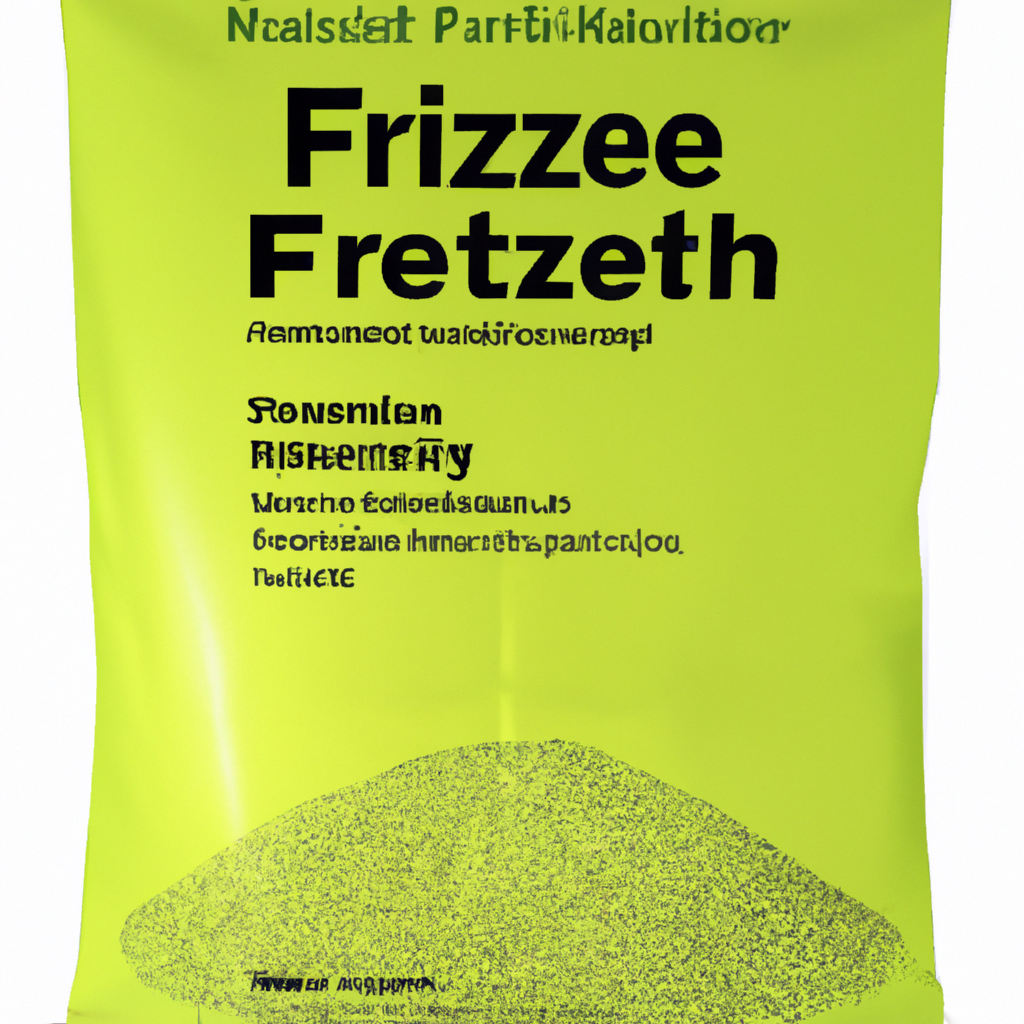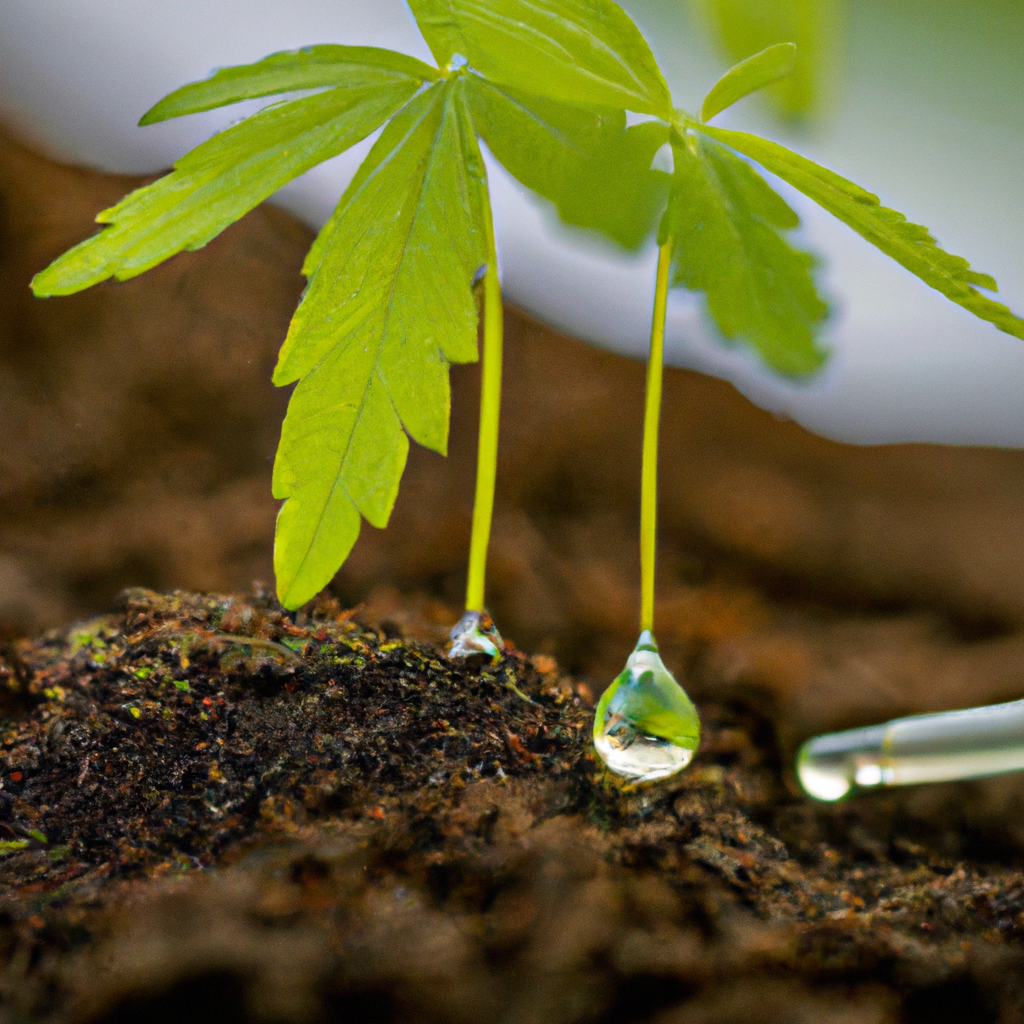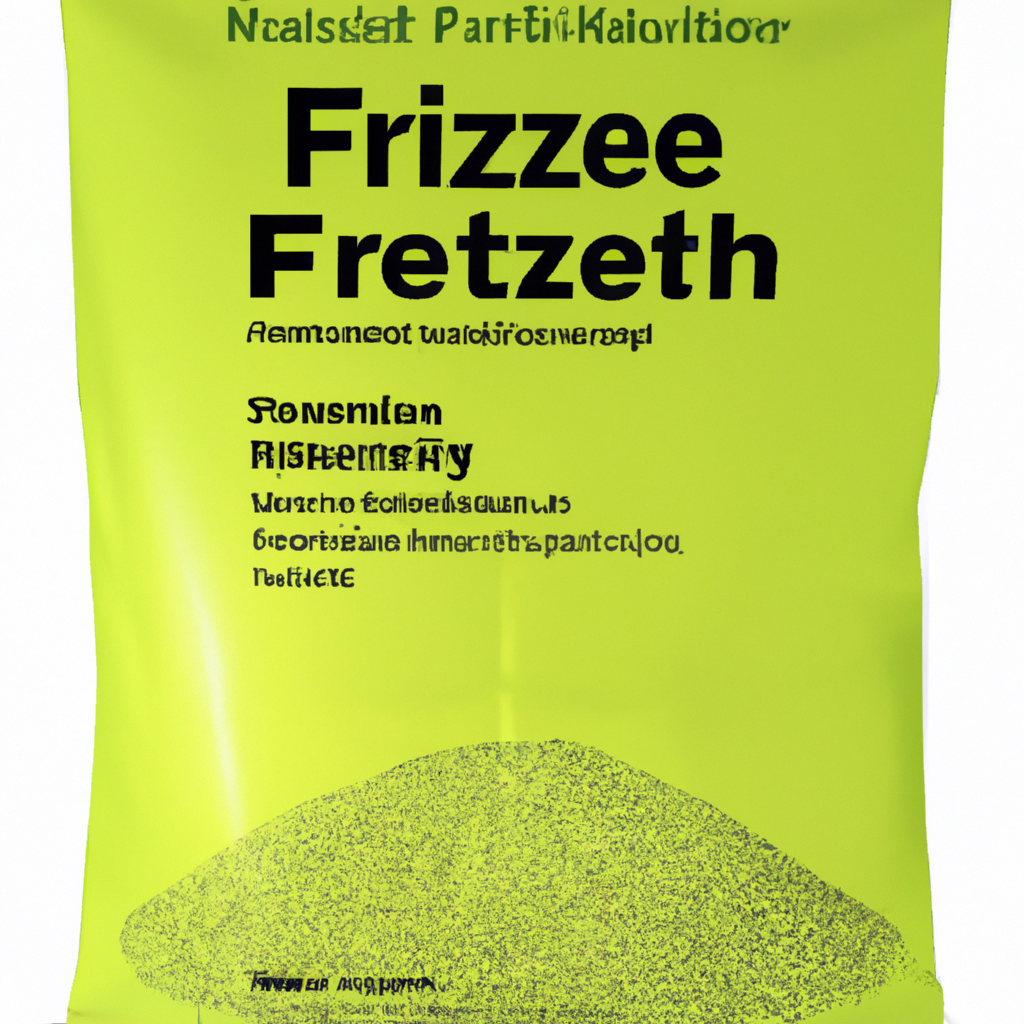If you’re looking to give your plants a boost and achieve rapid growth, then quick release fertilizer might be just what you need. In this article, you’ll discover the simple yet effective methods to use quick release fertilizer to maximize your plants’ potential. From understanding the best application techniques to ensuring proper dosage, you’ll learn everything you need to know to promote healthy and thriving plant growth. Say goodbye to slow progress and hello to lush, vibrant gardens with the help of quick release fertilizer.

Choosing the Right Quick Release Fertilizer
When it comes to choosing the right quick release fertilizer, there are a few factors to consider. One of the first things you should check is the NPK ratio, which refers to the ratio of nitrogen (N), phosphorus (P), and potassium (K) in the fertilizer. The NPK ratio will vary depending on the type of plant you are fertilizing and its specific nutrient requirements. Different plants have different nutrient needs, so it’s important to choose a fertilizer with the appropriate NPK ratio for your plants.
Aside from the NPK ratio, it’s also important to consider the micronutrients present in the fertilizer. Micronutrients are essential elements that plants need in relatively small quantities, such as iron, zinc, manganese, and copper. These micronutrients are crucial for various biochemical processes in plants and their deficiency can result in stunted growth or nutrient deficiencies. Therefore, make sure that the quick release fertilizer you choose contains a balanced blend of these micronutrients.
Lastly, don’t forget to read the label instructions on the fertilizer packaging. The label will provide you with important information on how to properly use the fertilizer, including the recommended application rate, frequency of application, and any precautions or safety measures you need to take. Following the label instructions is crucial to ensure that you are using the fertilizer correctly and optimizing its benefits.
Preparing the Soil for Fertilization
Before applying any fertilizer, it’s essential to prepare the soil to create an optimal environment for plant growth. One of the first steps in soil preparation is testing the soil pH. Soil pH affects nutrient availability to plants, so it’s important to know if your soil is acidic, neutral, or alkaline. Most plants prefer a slightly acidic to neutral pH range of 6.0 to 7.0. If your soil pH is too high or too low, you may need to amend it with additives like sulfur or lime to achieve the optimal pH range.
Additionally, it’s important to remove any weeds and debris from the soil before fertilization. Weeds compete with plants for nutrients and water, so eliminating them will ensure that your plants can fully utilize the fertilizers you apply. Removing debris, such as rocks or sticks, will also help create a clean and clutter-free environment for plants to grow.
Finally, loosening the soil is crucial to ensure that the fertilizer can penetrate the soil and reach the plant roots effectively. Using a garden fork or tiller, gently loosen the soil in the area where you will be applying the fertilizer. This process helps to improve soil aeration and drainage, which are essential for healthy plant growth.
Applying Quick Release Fertilizer
Once the soil is properly prepared, it’s time to apply the quick release fertilizer. One of the key factors to consider is determining the appropriate application rate. Applying too much fertilizer can result in fertilizer burn, which damages the plant’s roots and leaves. On the other hand, applying too little fertilizer may not provide the necessary nutrients for optimal growth. As a general rule of thumb, follow the recommended application rate provided on the fertilizer label and adjust it based on the specific needs of your plants.
When applying the fertilizer, it’s best to place it underneath the plant, within the root zone. This ensures that the nutrients are delivered directly to the roots, where they are needed the most. Avoiding direct contact between the fertilizer and plant leaves is essential, as it can lead to leaf burn or other damage. If any fertilizer does come into contact with the leaves, be sure to wash it off with water immediately.
Watering After Fertilization
After applying the quick release fertilizer, it’s important to provide adequate moisture to help the nutrients penetrate the soil and reach the roots. Watering your plants after fertilization is crucial for ensuring proper nutrient absorption. However, it’s important to strike a balance between providing enough moisture and avoiding overwatering.
Adequate moisture refers to watering the plants to the point where the soil is evenly moist, but not saturated or waterlogged. Different plants have different water requirements, so make sure to understand the specific water needs of your plants. In some cases, it may be beneficial to water plants deeply and less frequently, allowing the water to penetrate deeper into the soil and reach the plant’s root system.
Overwatering, on the other hand, can lead to waterlogging and root rot, which can negatively impact plant health. It’s important to monitor the soil moisture levels and avoid watering if the soil is still moist from previous watering or rainfall. Regularly check the moisture levels by sticking your finger into the soil or using a moisture meter.
Mulching is another technique that can help retain moisture in the soil. Applying a layer of organic mulch, such as wood chips or straw, around your plants helps to reduce evaporation and maintain a more stable soil temperature, leading to improved water retention. Mulching also helps suppress weed growth and adds organic matter to the soil over time.

Frequency of Fertilization
The frequency of fertilization depends on various factors, including the type of plants, their growth stage, and the fertilizer’s nutrient release rate. It’s important to follow the fertilizer manufacturer’s recommendations for the specific product you are using, as they have the most knowledge about their fertilizer’s formulation.
Generally, plants have different periods of high nutrient demand throughout their growth cycle. For example, they may require frequent fertilization during their active growing season but less frequent fertilization during dormancy or winter months. It’s important to understand the specific nutrient needs of your plants and adjust the frequency of fertilization accordingly.
Monitoring the plant’s response to fertilization is also crucial. Pay attention to any signs of overfertilization, such as yellowing or wilting leaves, stunted growth, or leaf burn. If these signs appear, it may be necessary to reduce or adjust the frequency of fertilization.
Managing Fertilizer Application
To ensure the best results and minimize any negative impacts, it’s important to manage fertilizer application carefully. One of the primary concerns is fertilizer burn, which occurs when plants are exposed to excessive amounts of fertilizer, resulting in root and leaf damage. To avoid fertilizer burn, never exceed the recommended application rate and distribute the fertilizer evenly throughout the root zone.
Another consideration is preventing fertilizer runoff. Fertilizer runoff occurs when excess fertilizer is washed away by rain or irrigation, contaminating nearby water bodies and causing water pollution. To prevent runoff, avoid applying fertilizer before heavy rainfall and ensure that the fertilizer is applied within the root zone, where the plants can absorb it.
Applying fertilizer at the right time is also important. For most plants, it’s best to apply quick release fertilizers when they are actively growing or during their active growing season. Avoid fertilizing dormant plants, as they have reduced nutrient needs during this period. Additionally, applying fertilizer when the soil is moist can help improve nutrient absorption.

Storing Quick Release Fertilizer
If you have leftover quick release fertilizer or need to store it for future use, it’s essential to practice safe storage practices. Proper storage helps maintain the fertilizer’s effectiveness and prevents any potential accidents or incidents.
Store the fertilizer in a cool, dry, and well-ventilated area to prevent moisture buildup, which can cause clumping or degradation of the product. Moisture can also lead to nutrient leaching or loss of potency. Make sure to keep the fertilizer away from any heat sources or open flames to prevent combustion.
It’s important to store quick release fertilizer in a secure location, out of reach of children and pets. Fertilizers are usually formulated with concentrated nutrients that may pose health hazards if ingested in large quantities. Keep the fertilizer in its original packaging to ensure that the label instructions and safety information are easily accessible.
Regularly check the stored fertilizer for any signs of moisture, clumping, or deterioration. If the fertilizer is clumping or has an unusual odor, it may indicate moisture penetration or degradation of the product. If any abnormalities are observed, dispose of the fertilizer properly and avoid using it.
Alternative Methods for Rapid Plant Growth
While quick release fertilizers can provide rapid results, there are alternative methods that you can explore for promoting rapid plant growth. One such method is the use of organic fertilizers. Organic fertilizers are derived from natural and organic sources, such as composted materials, animal manure, or plant-based products. These types of fertilizers release nutrients slowly and steadily, providing a continuous source of nourishment for plants.
Another alternative method is using compost and manure. Compost is a rich, dark substance that is produced through the decomposition of organic matter. Incorporating compost into your soil helps improve soil fertility, structure, and nutrient content. Manure, on the other hand, is an excellent source of organic matter and nutrients. However, it’s important to properly compost or age manure to eliminate any potential pathogens and prevent burning or damaging plants.
Foliar feeding is another technique that can be implemented for rapid plant growth. This method involves spraying a nutrient solution directly onto the plant leaves, allowing the plant to absorb nutrients through its foliage. Foliar feeding can be especially useful when plants have difficulty absorbing nutrients from the soil due to soil pH issues, poor root health, or nutrient imbalances. However, it’s important to follow specific instructions and avoid foliar feeding during periods of excessive heat or direct sunlight, as it can lead to leaf burn.

Potential Benefits and Drawbacks
Using quick release fertilizers for rapid plant growth comes with both benefits and potential drawbacks. One of the main benefits of quick release fertilizers is their ability to provide rapid results. These fertilizers are formulated to release nutrients quickly, allowing plants to access them immediately and promote rapid growth. Quick release fertilizers can also increase yields and improve overall plant health when used correctly.
However, there is a risk of overfertilization when using quick release fertilizers. Overfertilization can lead to nutrient imbalances, stunted growth, or even plant death. It’s important to follow the recommended application rates and monitor the plant’s response to avoid overfertilization.
Another potential drawback of quick release fertilizers is their environmental impact. Excess fertilizer runoff can contribute to water pollution and lead to algae blooms or other adverse effects on aquatic ecosystems. To minimize environmental impact, it’s important to apply fertilizers responsibly, following best practices and guidelines.
Conclusion
In conclusion, using quick release fertilizers can be an effective way to promote rapid plant growth. By choosing the right fertilizer, preparing the soil properly, applying the fertilizer correctly, watering adequately, and following appropriate storage and management practices, you can maximize the benefits of quick release fertilizers while minimizing any potential risks. Remember to always read the label instructions and take into account the specific needs of your plants. With proper care and attention, you can achieve rapid plant growth and enjoy a bountiful garden or thriving indoor plants.

